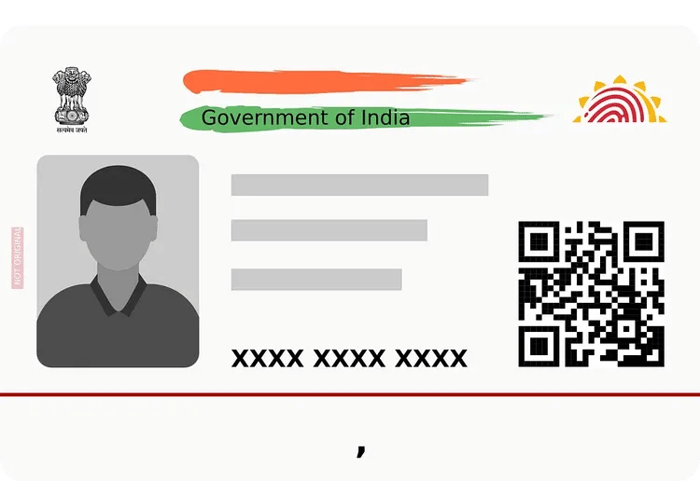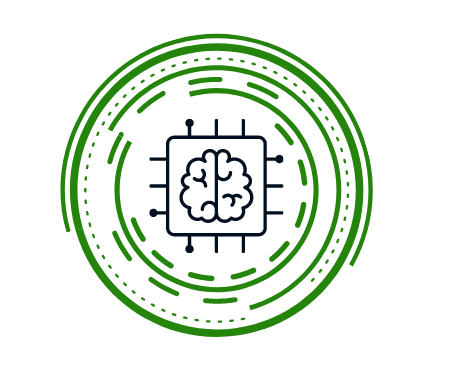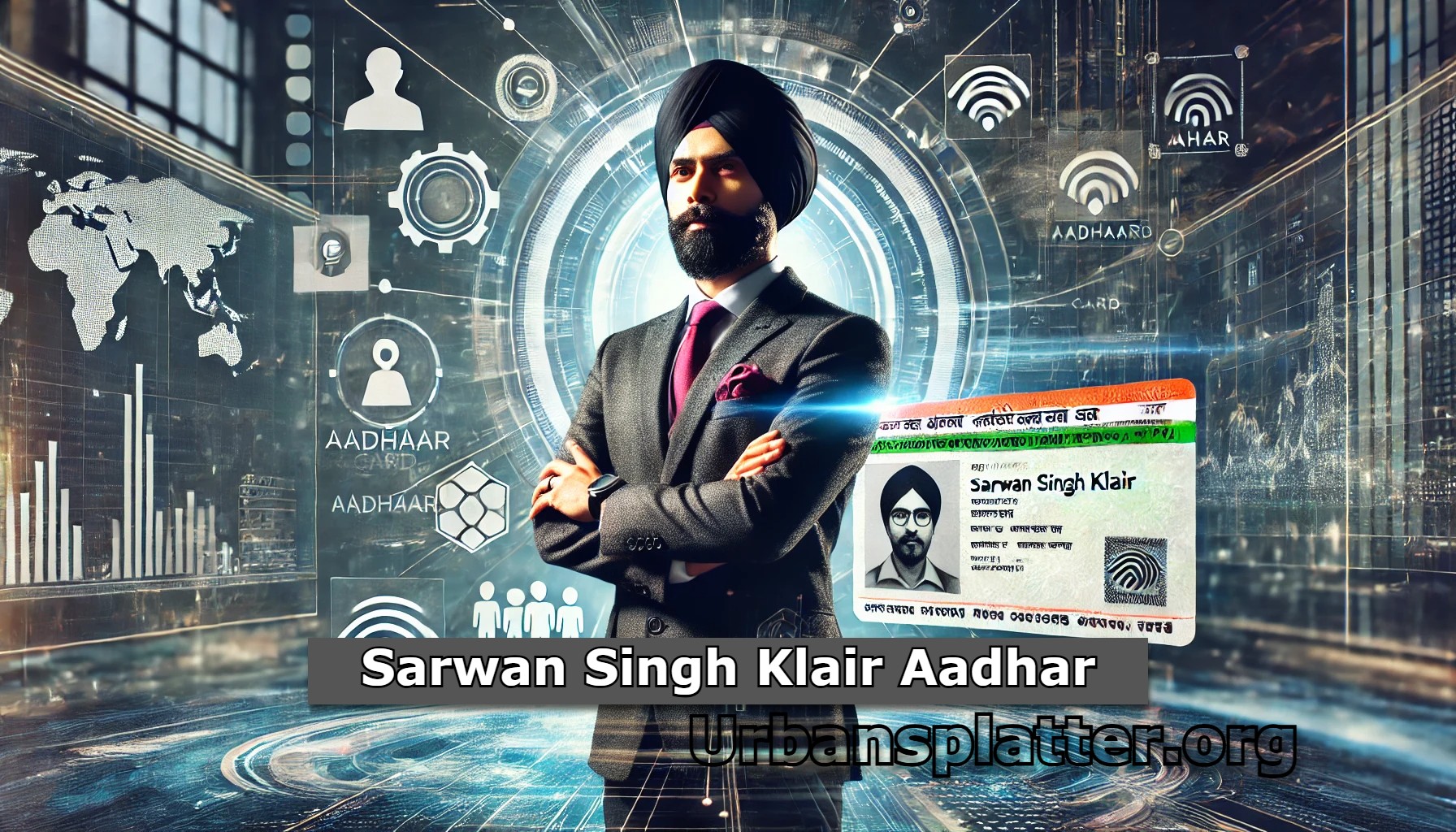When you think about identity in the digital age, things get really interesting. The story of Sarwan Singh Klair Aadhar and how Aadhar shaped not just his life but countless others is a compelling chapter in this evolution. It’s a tale filled with challenges, triumphs, and the ongoing quest for recognition in a modernizing world.
The Emergence of Aadhar: An Overview
Introduction to Aadhar and Its Purpose
Aadhar is more than just a number. It is a unique identification system in India, designed to streamline access to various services. Imagine having a single identity that links you to multiple benefits. That’s the essence of Aadhar. It was created to simplify welfare benefits and ensure that aid reaches those who need it most.
Historical Context of Aadhar’s Development
Launched in 2009, Aadhar was a response to the growing need for a reliable identification system. Before Aadhar, identity verification in India was often cumbersome. Various documents were required, and the process could take ages. Aadhar aimed to change that.
It was initiated by the Unique Identification Authority of India (UIDAI), under the leadership of Nandan Nilekani. The idea was to provide every resident of India with a unique 12-digit number. This number would serve as a digital identity, making it easier for individuals to access services and benefits.
Aadhar’s Role in the Indian Economy
So, how does Aadhar influence the Indian economy? The answer lies in its ability to connect people with services. With over 1.2 billion Aadhar enrollments as of 2021, it has become a crucial tool in the delivery of government services. From subsidies to tax benefits, Aadhar has streamlined processes that previously faced numerous hurdles.
This system has also encouraged financial inclusion. It helps people open bank accounts and access loans, which they might not have been able to do without a formal identity. With Aadhar, the economic landscape of India is shifting towards a more inclusive model.
Public Reception and Key Milestones
The public’s reception of Aadhar has been mixed. On one hand, many appreciate the convenience it offers. Having a single ID for various services is a game-changer. On the other hand, concerns about privacy and data security have raised eyebrows.
Some key milestones in Aadhar’s journey include:
- 2009: Launch of Aadhar
- 2010: The First Aadhar number issued
- 2016: Aadhar made mandatory for various services
- 2021: Over 1.2 billion enrollments
As Ravi Sharma, an Aadhar Project Expert, said,
“Aadhar has transformed the landscape of identity in India.”
Challenges Faced During Implementation
Despite its successes, Aadhar has faced several challenges. One major issue is the concern over data privacy. With so much personal information stored in one place, questions about security arise. How can users be sure their data is safe?
Another challenge is the accessibility of Aadhar services. While many urban residents can easily enroll, those in rural areas often face difficulties. Limited internet access and lack of awareness can hinder the enrollment process.
Moreover, the mandatory linking of Aadhar with various services has led to debates. Some argue that it is essential to ensure that benefits reach the right people. Others believe it infringes on individual rights.
Conclusion
Aadhar has undoubtedly made a significant impact in India. Its journey from a simple identification system to a vital part of the economy reflects its importance. As it continues to evolve, the challenges it faces will need to be addressed. The future of Aadhar will likely depend on how well it can balance convenience with privacy and accessibility.
Who is Sarwan Singh Klair Aadhar?

Sarwan Singh Klair Aadhar is a name that resonates with many in the realm of community welfare. Born in 1975, he has dedicated over a decade of his life to advocating for the rights of Aadhar holders. His journey is not just a personal story; it reflects the broader narrative of digital identity in India and its implications for millions.
Biographical Insights into Sarwan Singh Klair Aadhar
Sarwan’s early life shaped his worldview. Growing up in a modest environment, he witnessed firsthand the struggles of individuals without a recognized identity. This experience ignited a passion for social justice within him. He understood that identity is not just a name or a number; it’s a fundamental part of human dignity.
His advocacy began in earnest more than ten years ago. Since then, Sarwan has become a prominent figure in community welfare. He has tirelessly worked to bring attention to the challenges faced by those navigating the complexities of identity verification in a digital age.
Key Accomplishments and Contributions
- Advocacy for Aadhar Rights: Sarwan has been at the forefront of pushing for the rights of Aadhar holders, ensuring their voices are heard.
- Community Workshops: He has organized numerous workshops aimed at educating people about the importance of digital identity.
- Policy Influence: His efforts have led to discussions with policymakers to improve the Aadhar system.
These accomplishments are not just accolades; they are a testament to his commitment to making a difference. Sarwan believes that,
“Every individual deserves a recognized identity.”
This belief drives his work and fuels his passion.
His Connection to Digital Identity
In today’s world, digital identity is crucial. It opens doors to services, opportunities, and rights. Sarwan understands this intimately. His connection to digital identity goes beyond personal experience; it’s about empowering others.
He emphasizes that a recognized identity can change lives. It can provide access to education, healthcare, and employment. For many, Aadhar is not just a card; it’s a lifeline. Sarwan’s work has highlighted this connection, advocating for systems that recognize the importance of digital identity in modern society.
Personal Anecdotes of His Experiences
One of Sarwan’s most memorable experiences was meeting a single mother who struggled to access government benefits due to a lack of identity verification. Her story moved him deeply. He saw the frustration in her eyes, the helplessness that came with being invisible in a system that required proof of identity. This encounter solidified his resolve to fight for those who felt voiceless.
He often shares stories like this, reminding us that behind every statistic is a human being with hopes and dreams. These anecdotes resonate with audiences, making the issue of digital identity feel personal and urgent.
Impact of Aadhar on His Life Choices
Aadhar has profoundly influenced Sarwan’s life choices. It has shaped his career and his mission. He often reflects on how the introduction of Aadhar changed the landscape of identity in India. It made him realize the power of recognition and the responsibility that comes with it.
For Sarwan, Aadhar is not just a government initiative; it’s a movement towards inclusivity. He believes that the impact of Aadhar extends beyond the individual to society as a whole. It fosters a sense of belonging and community.
In his advocacy, Sarwan has seen the transformative power of Aadhar in action. Individuals who once felt marginalized now have a voice. They can claim their rights and participate fully in society. This change is what drives him every day.
Understanding Sarwan requires us to look at his life story and how Aadhar influenced his societal role. His journey is a reminder that every individual, regardless of their background, deserves recognition and respect in the digital age.
The Significance of Digital Identity in India

In today’s fast-paced world, understanding digital identity is crucial. Think about it: how do you prove who you are? Traditionally, people relied on physical documents like IDs and passports. But in India, the introduction of Aadhar has transformed this landscape.
Defining Digital Identity in the Context of Aadhar
So, what exactly is digital identity? In simple terms, it refers to the online representation of an individual. Aadhar, India’s unique identification system, plays a significant role in this. It assigns a 12-digit number to every resident, linking them to their biometric and demographic data.
This means that your digital identity is now tied to Aadhar. It’s more than just a number; it’s a gateway to various services. From banking to healthcare, Aadhar opens doors that were once locked behind physical documents.
Understanding How Aadhar Reshapes Personal Identification
Aadhar reshapes personal identification by streamlining processes. Imagine standing in a long queue to submit your documents. Frustrating, right? With Aadhar, you can authenticate your identity in seconds. This efficiency is a game changer.
Moreover, Aadhar enhances accessibility. People in remote areas can now access government services without the need for extensive documentation. This shift is monumental in a country where many still struggle with basic identification.
Comparison of Traditional vs. Digital Identity Methods
Let’s break it down. Traditional identity methods involve:
- Physical documents
- Long wait times
- Risk of loss or theft
On the other hand, digital identity through Aadhar offers:
- Quick verification
- Reduced paperwork
- Enhanced security through biometrics
Which one seems more efficient to you? The digital method streamlines the identification process, reducing hassle for everyone involved.
Case Studies on Digital Identity Impacts
To illustrate the impact of digital identity, consider the case of a rural farmer in India. Before Aadhar, accessing government subsidies was a nightmare. He had to navigate through numerous forms and approvals. Now, with Aadhar, he can receive his subsidies directly into his bank account, all thanks to a simple number.
Another example is in healthcare. Hospitals now use Aadhar for patient identification. This reduces errors and speeds up treatment. Aadhar is not just a number; it’s a lifeline for many.
Future Prospects of Digital Identity
What does the future hold for digital identity in India? The possibilities are vast. As technology evolves, so will Aadhar. Imagine using your digital identity for secure online transactions or even voting. The integration of Aadhar with other services could redefine convenience.
However, it’s essential to address concerns about privacy and data security. As Anjali Rao, a digital rights activist, aptly puts it,
“Aadhar redefines how we view identity.”
This statement resonates with the ongoing discussions about the balance between convenience and security.
Digital identity isn’t just a buzzword; it’s a necessity for navigating modern life. As more services become digital, having a secure and efficient identity system will be crucial. The future is bright, but it’s also filled with responsibilities.
In summary, the significance of digital identity in India cannot be overstated. With Aadhar leading the way, the country is moving towards a more accessible and transparent future. You have the power to be part of this transformation. Embrace it!
Challenges Associated with Aadhar

Aadhar, India’s biometric identification system, has transformed the way citizens interact with government services. However, it has also brought several challenges to light. You might wonder, what are these challenges? Let’s explore them together.
1. Privacy Concerns Surrounding Personal Data
One of the biggest challenges with Aadhar is the privacy of personal data. Your biometric information, including fingerprints and iris scans, is stored in a centralized database. This raises questions: How secure is this data? Who has access to it? The fear of misuse is palpable.
The concern is not unfounded. Data breaches have occurred in various sectors, exposing sensitive information. Many fear that their data could be used for malicious purposes. As legal expert Vikram Singh puts it,
“With advancements come responsibilities, especially regarding privacy.”
This statement underscores the need for stringent measures to protect individual privacy.
2. Legal Battles Over Aadhar’s Legitimacy
Legal battles have erupted over the legitimacy of Aadhar. Critics argue that the system violates fundamental rights. Various lawsuits have challenged its constitutionality. Some claim that Aadhar is a form of surveillance, infringing on the right to privacy.
These legal disputes have led to a tug-of-war between the government and citizens. The Supreme Court of India has had to step in, ruling that while Aadhar is beneficial, it must be used cautiously. The ongoing legal challenges can lead to uncertainty for many individuals relying on Aadhar.
3. Challenges Faced by Marginalized Groups
Not everyone has equal access to Aadhar. Marginalized groups often face significant challenges. For instance, people living in remote areas may struggle to enroll due to a lack of facilities. Additionally, individuals with disabilities may find it hard to provide biometric data.
This creates a barrier to accessing essential services. Imagine being denied food rations simply because you couldn’t get an Aadhar card. It’s a harsh reality for many. The system, while intended to streamline services, can inadvertently exclude those who need help the most.
4. Public Trust Issues and Misinformation
Public trust is crucial for any system to function effectively. However, Aadhar has faced skepticism. Misinformation spreads quickly, leading to fear and confusion. People may believe that Aadhar is a tool for government surveillance or control.
Many citizens are unsure about how their data is used or shared. This lack of clarity fosters distrust. How can a system thrive when people are afraid to engage with it? Building public trust is essential for Aadhar’s success.
5. Data Security Risks
Data security is another pressing concern. With so much sensitive information stored in one place, the risk of hacking increases. Cybercriminals are always on the lookout for vulnerabilities. What happens if they gain access to Aadhar’s database? The consequences could be devastating.
The government has faced criticism for its response to data leaks. Many believe that more should be done to ensure data security. Regular audits and updates to security protocols are necessary to protect citizens’ information.
Conclusion
As Aadhar expands, so do concerns about privacy and access. The challenges associated with this system are complex and multifaceted. From privacy concerns to legal battles, the road ahead is fraught with obstacles. Addressing these issues is crucial for building a system that serves everyone effectively.
Ultimately, it’s about finding a balance. Aadhar has the potential to simplify access to services, but it must do so without compromising individual rights. How can we ensure that technology serves humanity, not the other way around?
Aadhar’s Role in Welfare Schemes

Have you ever wondered how identification can change lives? Aadhar, India’s unique identification system, plays a crucial role in welfare schemes. It simplifies access to benefits for millions. Let’s explore how Aadhar is reshaping welfare distribution.
Streamlining Access to Benefits
One of the most significant advantages of Aadhar is its ability to streamline access to benefits. Before Aadhar, many faced hurdles when trying to claim government benefits. Long waiting times, paperwork, and bureaucratic red tape often led to frustration.
With Aadhar, the process is much smoother. You simply present your Aadhar number, and your identity is verified instantly. This efficiency not only saves time but also ensures that the right people receive the help they need. Imagine being able to access essential services without the hassle!
Unique Identification for Subsidy Disbursement
Another key role of Aadhar is providing a unique identification for subsidy disbursement. In the past, subsidies often went to unintended recipients due to a lack of proper identification. Aadhar eliminates this issue by linking benefits directly to individuals’ Aadhar numbers.
This system helps prevent fraud and ensures that subsidies reach those who truly need them. For example, farmers can receive subsidies directly, making it easier for them to access resources. This direct connection is vital for the success of welfare schemes.
Influence on Rural Economies and Social Welfare
How does Aadhar impact rural economies? The answer lies in its ability to connect rural citizens to government services. Many rural areas struggle with poverty and lack of access to essential services. Aadhar helps bridge this gap.
- It enables farmers to access loans and subsidies.
- It connects families to health services and educational opportunities.
- It empowers women by giving them access to financial resources.
By fostering economic growth, Aadhar plays a vital role in enhancing social welfare. It’s not just about identification; it’s about creating opportunities.
Connecting Citizens to Government Services
Connecting citizens to government services is another area where Aadhar shines. With a single identification number, accessing services like healthcare, education, and housing becomes more straightforward.
Think about it: instead of filling out multiple forms and visiting various offices, you can use your Aadhar number to access everything in one go. This connection not only saves time but also encourages more people to utilize available services. The more people who access these services, the better the community thrives.
Analysis of Success Rates in Welfare Distribution
The impact of Aadhar on welfare schemes can be seen in the success rates of these programs. Case studies reveal that service delivery has improved significantly since Aadhar’s implementation. For instance, many states have reported a decrease in corruption within welfare schemes.
According to Meena Patel, a social activist,
“Welfare needs an effective identification system, Aadhar provides that.”
This statement highlights the importance of Aadhar in ensuring that benefits reach their intended recipients.
With fewer opportunities for fraud, more funds are available to help those in need. The analysis speaks volumes: Aadhar is not just a number; it’s a lifeline for many.
Conclusion
The connection between Aadhar and welfare distribution presents a powerful case for digital identification. It’s about more than just technology; it’s about transforming lives. With Aadhar, the future of welfare schemes looks brighter. It’s paving the way for a more efficient, transparent, and equitable system that benefits everyone.
Personal Stories: How Aadhar Changed Lives

When you think about identity, what comes to mind? For many, it’s more than just a name or a number. It’s about recognition, belonging, and access. The Aadhar system in India has reshaped lives in profound ways. Let’s explore some real-life stories of individuals who have been impacted by Aadhar.
Real-life Stories of Individuals Impacted by Aadhar
Every number tells a story. Aadhar provides a unique identification number to over a billion people in India. This initiative has transformed countless lives. Take the story of Sarwan Singh Klair Aadhar. He faced numerous challenges before Aadhar came into his life. Without a proper ID, accessing government services was nearly impossible for him.
- Before Aadhar, Sarwan struggled to get healthcare.
- He faced barriers in opening a bank account.
- His children had difficulty enrolling in school.
With his Aadhar number, everything changed. Suddenly, he had access to essential services. He could receive medical treatment, open a bank account, and ensure his children’s education. Sarwan’s story is a testament to how Aadhar can empower individuals. He said,
“In Aadhar, I found not just a number but my identity.”
Sarwan Singh Klair Aadhar Transformative Experiences
Sarwan’s transformation didn’t happen overnight. It was a gradual process. With his Aadhar number, he gained access to various government schemes. This access allowed him to improve his family’s living conditions. He could apply for subsidies and benefits that were previously out of reach.
His experience highlights an essential aspect of Aadhar: it’s not just about having a number; it’s about the doors that number can open. Sarwan’s ability to access resources has not only benefited him but also his community. He became a beacon of hope for others in similar situations.
Community Perspectives on Aadhar’s Effectiveness
What do communities think about Aadhar? The responses are mixed. Some see it as a vital tool for empowerment. Others express concerns about privacy and data security. It’s essential to listen to these voices. Many community members share positive experiences. They appreciate the streamlined access to services.
- Many families report improved access to healthcare.
- Small business owners find it easier to obtain loans.
- Students benefit from scholarships and educational programs.
Yet, there are challenges. Some people still face difficulties in enrollment. Others worry about the misuse of their data. These perspectives are crucial in understanding Aadhar’s overall impact.
Lessons Learned from Success and Failure Stories
Every story teaches us something. From Sarwan’s success to others who faced hurdles, we learned valuable lessons. One key takeaway is the importance of awareness. Many individuals are unaware of the benefits Aadhar offers. Educating communities can help them harness Aadhar’s full potential.
On the flip side, there are cautionary tales. Some people have encountered bureaucratic red tape. They struggled to update their information or faced technical glitches. These challenges remind us that while Aadhar is a powerful tool, it isn’t perfect.
Anecdotal Evidence Supporting Aadhar’s Benefits
Personal anecdotes provide insight into Aadhar’s real-world impact. Consider the story of a small farmer. After obtaining his Aadhar number, he could access government subsidies for seeds and fertilizers. This support significantly increased his crop yield. His success story resonates with many in rural areas.
In another instance, a woman shared how Aadhar helped her secure a job. With her identification, she could apply for positions she once thought were out of reach. These stories highlight the human side of Aadhar’s implementation.
Whether it’s about accessing healthcare, education, or employment, Aadhar has changed lives. It’s more than just a number; it represents hope, opportunity, and identity. As we continue to hear these stories, we understand the broader significance of Aadhar in the lives of millions.
The Future of Digital Identity in India

Digital identity is becoming a cornerstone of modern society. In India, this transformation is largely driven by the Aadhar system. But what does the future hold? Let’s explore some key aspects that will shape digital identity in India.
1. Forecasting Future Trends in Digital Identity
As we look ahead, several trends are emerging in the digital identity landscape. These trends will likely redefine how individuals interact with services and institutions. Here are a few to consider:
- Increased Personalization: Expect services to be tailored to individual needs based on data.
- Decentralization: More control over personal data may shift towards individuals.
- Enhanced Security Measures: With rising cyber threats, stronger security protocols will be essential.
How do you feel about these changes? Are you ready for a more personalized experience, or do you worry about data privacy?
2. aadhar’s Evolving Role in Society
The Aadhar system has been a game-changer since its inception. Initially aimed at providing a unique identity to every resident, its role has expanded. Today, Aadhar is not just about identification; it’s about access. Access to services, benefits, and even financial systems.
However, as Aadhar evolves, so does the debate surrounding its implications. While it brings efficiency, it also raises questions about surveillance and data misuse. How do we balance these aspects?
3. Potential Reforms for Aadhar Bolstering Privacy
Privacy concerns are at the forefront of discussions about Aadhar. To address these, potential reforms could include:
- Stronger Data Protection Laws: Ensuring that personal data is protected and used responsibly.
- Opt-in Systems: Allowing individuals to choose how their data is used.
- Transparency Measures: Making it clear how data is collected and used.
These reforms could help build trust in the system. After all, “The future of identity lies in our hands; we must shape it wisely” – Dr. Sujata Mohan, Tech Futurist.
4. Technological Advancements Shaping Identity Frameworks
Technology is rapidly changing how we think about identity. Innovations like blockchain and biometric systems are paving the way for more secure and efficient identity verification. These advancements can potentially enhance the Aadhar framework, making it more robust.
Imagine a world where your identity is verified in seconds without compromising your privacy. Sounds appealing, right?
5. Global Perspectives on India’s Digital Identity Movement
India’s approach to digital identity is being watched worldwide. The World Bank recognizes Aadhar as a case study for other nations. Countries looking to implement similar systems often look to India for insights and lessons learned.
What can we learn from these global perspectives? Collaboration and sharing best practices can lead to better systems that respect individual privacy while providing necessary services.
Conclusion
In contemplating the future of digital identity in India, it is clear that strategic planning is essential. The trends indicate a shift towards more personalized and secure identity systems, but this must be balanced with privacy concerns. Aadhar’s evolving role presents both opportunities and challenges. Reforms are necessary to bolster privacy and ensure that individuals feel secure in sharing their data.
Technological advancements will undoubtedly shape how we approach identity, and India’s movement is gaining global attention. As we navigate this complex landscape, it is vital to engage in conversations about how we can shape our digital identity wisely. The future is bright, but it requires our collective effort to ensure that it is also secure and respectful of individual rights.















